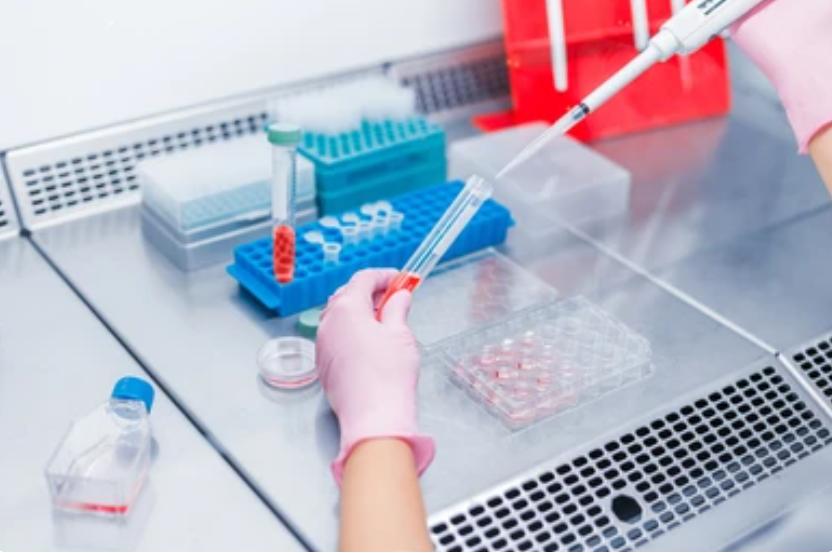Physical and Chemical Stability Analysis of ADCs
Online Inquiry
The stability of ADCs is determined by properties and processes stemming from both the antibody and the linker-toxin chemistry. Changes in the chemical and physical properties of ADCs compared to their antibody precursors introduce additional stability considerations that must be addressed during ADC drug development and production. Physical and chemical ADC, linker payload, and mAb instability could potentially impact the toxicity, immunogenicity, and efficacy of the molecule. A comprehensive understanding of ADC stability can help develop more efficient ADC molecules. Creative Proteomics provides customized solutions for the comprehensive analysis and characterization of unique aspects of ADC physical and chemical stability to help customers achieve their desired goal of obtaining more stable and potent ADC molecules.

Stability Analysis Strategies of ADCs at Creative Proteomics
Our ADC stability analysis strategy includes both physical stability analysis and chemical stability analysis. Our experienced experts use appropriate experimental designs to examine specific aspects of ADC stability using two or more techniques. This integrated approach ensures that all aspects of ADC stability are fully evaluated and monitored over time.
Physical stability analysis of ADCs includes the assessment of instability relating to conjugation processes as well as temperature-induced or photo-induced instability. Creative Proteomics examines the physical properties of ADCs using typical stability testing strategies and a range of advanced techniques combining differential scanning calorimetry (DSC), SEC, liquid chromatography–mass spectrometry (LC-MS), and electrophoresis analysis to assess any changes or degradation that may have occurred.
Chemical stability analysis of ADCs focuses on evaluating the stability of ADC chemistry, including assessing chemical instability related to the conjugation process, payload release, and the stability of linkage reactions. Our scientists utilize powerful analytical tools such as high-performance liquid chromatography (HPLC), mass spectrometry (MS), and peptide mapping to detect and quantify any chemical modification or degradation products.
Our Stability Analysis Methods
The stability of ADCs must be evaluated during the process of developing them into registered products. The type of information obtained in this study is highly dependent on the methodology used, and the following summarizes the methodology used by Creative Proteomics in the ADC stability analysis study.
| Method |
Degradation Process Observed |
| UV-Vis spectroscopy |
Turbidity and derivative UV spectroscopy to measure onset of aggregation. Drug to antibody ratio (DAR) and changes in DAR between processing conditions and stress conditions. |
| Intrinsic and extrinsic fluorescence spectroscopy |
Tertiary structure stability through temperature-ramping fluorescence measurements. |
| Differential scanning calorimetry (DSC) |
Relative solution stability observed through shifts in thermal transitions and reversibility of transitions. |
| Circular dichroism (CD) spectroscopy |
Secondary structure composition under stress conditions. |
| Dynamic light scattering |
Average size of ADC molecule and presence of particulates. |
| Capillary isoelectric focusing (cIEF) |
Quality control and changes in charge state distribution. |
| Imaged capillary SDS-PAGE |
Intact antibody fragmentation, reduced versus nonreduced sample workup to determine conjugation location. |
| Size-exclusion chromatography (SEC) with UV or MALS detection |
Detection and quantification of high molecular weight species and aggregates. Sizing information provided by MALS detection. |
| Hydrophobic interaction chromatography (HIC) |
Drug to antibody ratio (DAR) and changes in DAR between processing conditions and stress conditions. |
| ELISA Assays |
Monitor effect of linker payload on binding activity of the antibody, confirm quaternary structure integrity. |
| Reverse phase HPLC (RP-HPLC) |
Linker-payload distribution on heavy and light chains. |
| Liquid chromatography-mass spectrometry (LC-MS) |
DAR analysis, covalent cross-linking. Detection, quantitation of free linker drug and other small-molecule species. |
| Surface plasmon resonance (SPR) |
Changes in antigen binding on drug loading or stability challenge. |
| Plasma incubation, affinity capture of ADC, HIC, and LC-MS analysis |
Degradation of MMAD payload, susceptibility of ADC to proteases, reversibility of conjugation. |
Advantages of Our Stability Analysis for ADCs
- Experienced experts with deep expertise in ADC stability analysis.
- Comprehensive, customized stability analysis strategies and methodology development.
- Stability Indicator methodology development ensures that reliable measures of ADC stability are provided.
- All stability analysis services meet relevant regulatory guidelines to ensure compliance.
Creative Proteomics offers stability analysis services specifically designed for ADCs to ensure the stability and integrity of ADCs throughout the development and manufacturing process. Contact us to learn more about our service and we will be happy to serve you.

